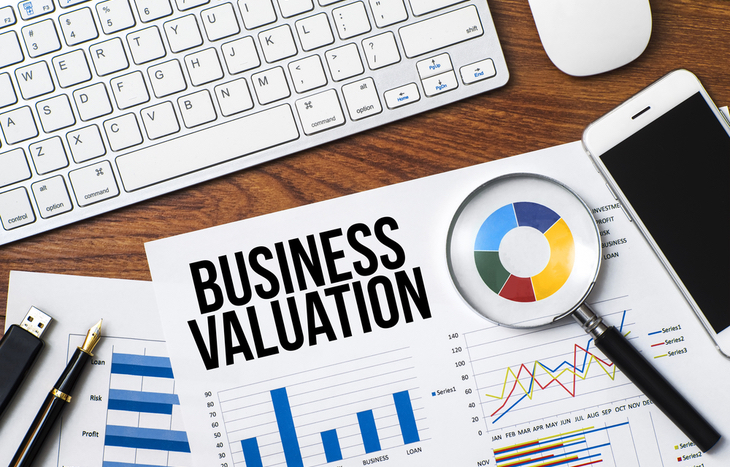What is Business Valuation?
When you invest in something, it’s because you believe it has value—and that its value will appreciate. But how do you know it has value? To understand what makes some investments better than others, it’s important to understand business valuation. It’s a concept that applies to everything from individual assets, to investment holdings, to entire companies.
Valuation is an estimated value or worth of an asset. Investors use estimated asset valuations and compare them to market prices. This helps determine what assets are worth buying or selling. Having the ability to identify a reasonable valuation for an asset puts an investor in a position to capitalize when it’s undersold or take profits when it’s oversold.
Here’s a closer look at valuation: what it means, how to calculate it and how investors and companies use it to make fiscally sound decisions.

Why Determine a Business’ Value?
Understanding how much a business is really worth is vital in many situations. Perhaps the most important is when it decides to issue shares of stock. Without knowing how much the company is worth, it’s impossible to know what an ownership share is worth. Which also factors into how many shares the company will issue. It all starts with business valuation.
Even after an IPO, when a business is well-established, there are still instances where business valuation comes into play. Some of the situations that require a clear determination a business’ value include:
- Sales, mergers and acquisitions
- Partner ownership allocation
- Taxation implications
- Investment insights
Of course, the reason business valuation is so important to investors is because it indicates their interest in that company as an investment vehicle. Individuals who invest in public securities want to know more about the company they’re investing in, including how much it’s worth. And there are no shortage of methods for identifying business value, no matter what aspects of its operation are most important to you.
Business Valuation Methods
A company’s value is often a moving target, always in flux. To help pin it down, there are numerous ways to judge its value based on specific metrics. The most common business valuation methods include:
- Book Value: The easiest concept of business valuation to understand, book value is equivalent to the shareholder equity a company carries on its balance sheet. Subtract total liabilities from total assets to get book value.
- Liquidation Value: This is the baseline worth of a company, assuming its assets are liquidated and liabilities paid. It assumes the company isn’t worth any more than the assets it’s carrying.
- Earnings Multiplier: Profits are at the core of a company’s financial success and value. The earnings multiplier valuation method adjusts the current price-to-earnings ratio to account for interest rates. In this way, investors can value the company based on its true earnings potential into the future.
- Discounted Cash Flow (DCF): Similar to the earnings multiplier, this valuation method uses future cash flows to derive the current value of the company. Essentially, DCF figures the value of an investment today by identifying its future worth.
- Market Capitalization: Market capitalization, or market cap, is the simplest method of valuating a business. Multiply share price by total number of outstanding shares to get the market cap. This method is the most realistic in determining what the market value of a company is.
- Times Revenue: This method involves using a multiplier for a company’s past revenues as a way of identifying its maximum value. The multiplier depends on the industry.
There are more ways to evaluate businesses, and different levels of refinement investors can factor in to determine a specific value. It comes down to each investor’s perspective. What do you believe are the most important factors that determine a company’s worth?
Intrinsic Value vs. Current Market Value
It’s important not to confuse intrinsic value with current market value. While they are very much related, there’s a key difference. Intrinsic value is what a company is worth, whereas current market value represents the going price of its shares. While both measure value, the former is its floor value, while the latter is its ceiling.
Thinking of company valuation in terms of a range rather than as a static figure can help investors identify what an appropriate value is. By comparing intrinsic value and current market value, it’s possible to identify if a company is over- or undervalued by the market:
- If intrinsic value is higher than current market value, it means the company is under-valued by investors.
- When current market value is higher than intrinsic value, it means the company is over-valued by investors.
- When the two are relatively equal, it means the company is appropriately valued by investors.
As is the case with any valuation metric, context is everything. A downtrodden company may be rightfully under-valued by investors, yet maintain a high intrinsic value. Conversely, investors may be overly bullish on companies with low intrinsic value, leading to a high market valuation. Always use valuation as a backdrop for better-understanding other assessment variables.
Valuation is What it’s Worth
As investors evaluate companies and their stock as investment vehicles, valuation is an important factor to consider. How much is this company actually worth? Moreover, by what metric? How does this compare to what people are willing to pay for it? Valuation provides a baseline for helping investors understand exactly what they’re putting their money behind. And also what they can expect in terms of future growth.
No matter the investment, a keen understanding of business valuation is important. After all, it’s a representation of what it’s worth!





